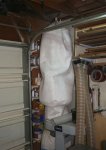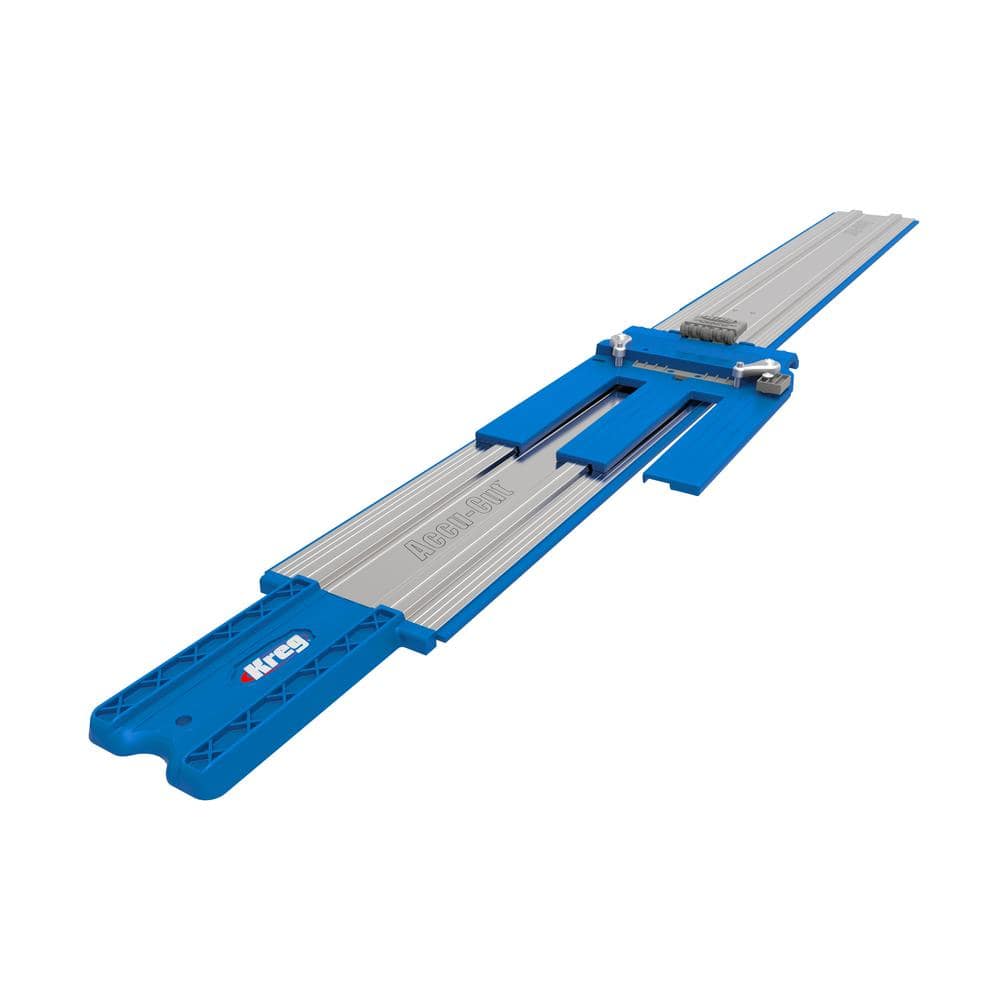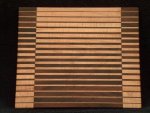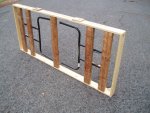- Messages
- 36,123
- Location
- ABQ NM
As a preface, let me say this is not the way to cut sheet goods. I'm primarily posting this as a "don't do this" Public Service Announcement. 
I needed to cut some parts off a full sheet of plywood Wednesday for the toolbox project I'm working on. I don't have a proper outfeed or side table on my tablesaw, so I had LOML helping me support the end of the sheet as I did the cut. We were cutting along the 4' dimension, and for the first cut of the day, I decided to trim about an inch or so off the end of the sheet, partly because there was a chipped corner at that end, and partly so LOML could get a feel for the task I was giving her. That first cut was a bit shaky, because she was wasn't familiar with the feel of guiding it smoothly through the saw. I was using the fence to guide the cut, but since I was supporting the middle of the long edge, I didn't have any control over the 1" strip between the blade and the fence. I knew this was a good potential scenario for a kickback demonstration, but I knew I was well out of the line of fire.
Just as we finished the cut, and almost as if it was in slow motion, the blade gently and smoothly tossed the offcut across the shop and speared the collection bag on my dust collector. Not surprisingly, the air pretty quickly got dusty in the shop.
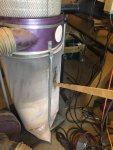
After our little test cut was completed, LOML did a great job helping me make the rest of the cuts now that she had a feel for how I needed to feed the wood into the saw. Plus, the sheet got about 9" shorter with each subsequent cut, making it easier and easier to handle.
As a side note, right before we started the second cut, she reminded me that I hadn't turned on the dust collector. I explained to her that it was kind of pointless, seeing as how it was now a dust pump. (I did put a new bag on the DC after we were done. I needed a bit of time to figure out where I had the spare bags stored.)
(I did put a new bag on the DC after we were done. I needed a bit of time to figure out where I had the spare bags stored.)
I needed to cut some parts off a full sheet of plywood Wednesday for the toolbox project I'm working on. I don't have a proper outfeed or side table on my tablesaw, so I had LOML helping me support the end of the sheet as I did the cut. We were cutting along the 4' dimension, and for the first cut of the day, I decided to trim about an inch or so off the end of the sheet, partly because there was a chipped corner at that end, and partly so LOML could get a feel for the task I was giving her. That first cut was a bit shaky, because she was wasn't familiar with the feel of guiding it smoothly through the saw. I was using the fence to guide the cut, but since I was supporting the middle of the long edge, I didn't have any control over the 1" strip between the blade and the fence. I knew this was a good potential scenario for a kickback demonstration, but I knew I was well out of the line of fire.
Just as we finished the cut, and almost as if it was in slow motion, the blade gently and smoothly tossed the offcut across the shop and speared the collection bag on my dust collector. Not surprisingly, the air pretty quickly got dusty in the shop.


After our little test cut was completed, LOML did a great job helping me make the rest of the cuts now that she had a feel for how I needed to feed the wood into the saw. Plus, the sheet got about 9" shorter with each subsequent cut, making it easier and easier to handle.

As a side note, right before we started the second cut, she reminded me that I hadn't turned on the dust collector. I explained to her that it was kind of pointless, seeing as how it was now a dust pump.
Last edited:

